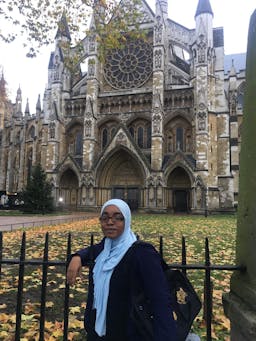Visibilizing Women’s Human Rights in the Climate Crisis – CEDAW General Recommendation 37 (2018)
Apr 28, 2022
First story
What with news of massive, uncontrollable fires (ranging from the Western United States to Brazil to Australia), severe droughts, and freak storms, floods, and other water-related disasters constantly on the airwaves; it is clear that the climate crisis is real – despite the views of the dogmatic few who deem the crisis a construct of a few fear-mongering scientists, development practitioners, far-left politicians, and others. While many speak of the broad economic, social, and environmental impacts; what is often missing from the discourse is a close examination of the gendered impacts of those directly affected by the climate crisis. But that has begun to change. One of the contributors to this shift is the Committee on the Elimination of All Forms of Discrimination against Women (CEDAW).
According to the Office of the High Commissioner for Human Rights, the CEDAW “is the body of independent experts that monitors implementation of the Convention on the Elimination of All Forms of Discrimination against Women. CEDAW Committee consists of 23 experts on women’s rights from around the world. Countries who have become a party to the treaty (States parties) are obliged to submit regular reports to the Committee on how the rights of the Convention are implemented. During its sessions, the Committee considers each State party report and addresses its concerns and recommendations to the State party in the form of concluding observations. The Committee also formulates general recommendations and suggestions. General recommendations are directed to States and concern articles or themes in the Conventions.”
This article focuses on the most recent general recommendation (GR) adopted by the Committee, at its sixty-ninth session in 2018. GR No. 37 on gender-related dimensions of disaster risk reduction in the context of climate change explicitly recognizes the differential impacts of the climate crisis on women, girls, men, and boys. Specifically, the GR notes that:
“situations of crisis exacerbate pre-existing gender inequalities and compound the intersecting forms of discrimination against, among others, women living in poverty, indigenous women, women belonging to ethnic, racial, religious and sexual minority groups, women with disabilities, refugee and asylum-seeking women, internally displaced, stateless and migrant women, rural women, unmarried women, adolescents and older women, who are often disproportionately affected compared with men or other women.”
It further highlights that, in many contexts:
“gender inequalities limit the control that women and girls have over decisions governing their lives, as well as their access to resources such as food, water, agricultural input, land, credit, energy, technology, education, health services, adequate housing, social protection and employment.6 As a result of those inequalities, women and girls are more likely to be exposed to disaster-induced risks and losses relating to their livelihoods, and they are less able to adapt to changes in climatic conditions.”
Like all of the GRs, GR 37 outlines ways in which States should work to ensure that women’s human rights are fully realized. These measures urge States to protect the following human rights of women:
- Right to live free from gender-based violence against women and girls
- Rights to education and to information
- Rights to work and to social protection
- Right to health
- Right to an adequate standard of living
- Right to freedom of movement
In my previous work, I had the opportunity to accompany a regional UN official on a mission to carry out a post-hurricane gendered assessment in The Bahamas. The assessment clearly demonstrated how vulnerabilities are exacerbated – as explained in GR 37. For example, some of the concerns emanating out of the assessment noted that, in the post-disaster context, there was higher rates of transactional sex attributed to a loss of economic opportunities combined with constraints to relocating to the main island to seek work opportunities. Additional concerns were brought to the fore because of the destruction of homes. In some cases, this meant that women were relocated to areas whereby personal safety concerns were increased. A notable example of the foregoing was a concern expressed by a young woman about the sexual harassment she faced when leaving and returning to her new place of residence.
The devastation wrought by Hurricane Dorian (2019) in The Bahamas gave rise to an even wider range of gender-related concerns that encompassed, inter alia, the right to water and sanitation, the right to education (particularly among irregular migrants), and the right to adequate housing. Thankfully, international partners played a significant role in assisting local actors with ensuring that rights concerns were addressed. However, what was incredibly obvious to me, is that States, including my own, must do more to address structural barriers facing women as they seek to realize their human rights. Using GR37 provides a framework and a great starting point for States to do exactly this.




